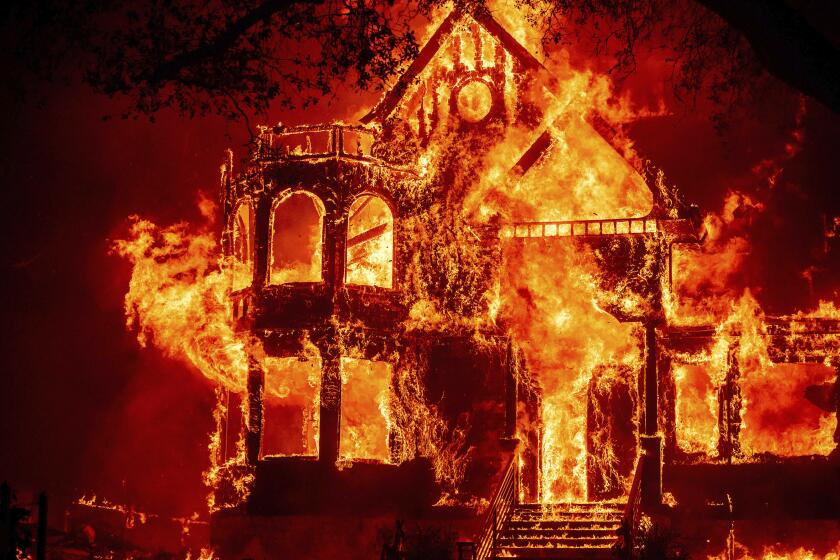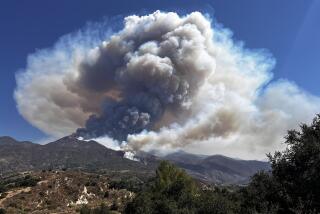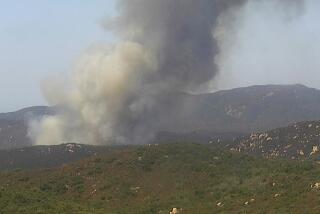Signs of life: Animals return to parks burned by Glass fire
When the Glass fire seared through portions of Sonoma County’s Hood Mountain Regional Park in September, it left little in its wake: Once-stately pines and oaks stood starkly amid seared chaparral, and the ever-present chatter of chirping birds was replaced by an eerie silence.
The fire burned more than 80% of the 2,000-acre park, according to Sonoma County Regional Parks spokeswoman Meda Freeman, and countless animals either died or fled.
“They don’t always make it out,” Freeman said. “Some go underground, and some can run out ahead of it, but there were sightings of deer that died in the fire.”
Now, two months after the devastating blaze chewed through the region, life is beginning to reemerge.
“Our staff are happy to report they’ve seen signs of wildlife returning to many areas,” Sonoma County Regional Park said in an update on its Facebook page, along with a video showing a jackrabbit hopping along a fire-ravaged Hood Mountain trail.
The park’s wildlife cameras also recorded deer, bobcats and a skunk returning to the charred trail. (With the volume turned up, birds can be heard chirping too.)
“It’s always good for the public to see those images,” Freeman said, “and get some reassurance that the wildlife are moving about in the park after the fire.”
Similar sightings have occurred in nearby Sugarloaf Ridge State Park, which also burned in the Glass fire. Trail cameras focused on a creek in the park captured birds, deer and mountain lions emerging for a drink of water in the weeks following the blaze.
Caitlin Cornwall, senior project manager at the Sonoma Ecology Center, said animals were often clever when it came to wildfire defense. Some run far from the flames, while others take shelter in hollow stumps, build dens out of downed trees or burrow underground.
“An amazing thing after a wildfire is to see how many holes in the ground there are,” Cornwall said, adding that rabbits, foxes, raccoons, small rodents, spiders and lizards are known to go underground to avoid flames. “I have this mental picture of all these different creatures crowding into someone’s den.”
Although there are often deaths during a fire, one of the hardest times for wildlife is the period between the flames and the first rain, Cornwall said, when there is very little food on the ground.
California’s wine county is once again facing threats from wildfires.
But nature is resilient. According to Cornwall, perennial grasses start to regrow within two weeks of a fire, chaparral in four. Often, trees grow new sprouts quickly — not on higher branches but lower down, where animals can reach them.
“A lot of the regrowth is lush and fast and easy to get to if you’re an herbivore,” she said, noting that almost all of California’s plant and animal communities have evolved with fire.
Still, the flames take their toll. California’s wildfires have burned through a record 4.2 million acres in 2020, and rescue teams have reported a variety of animals injured, including a young bobcat burned in the El Dorado fire and a barn owl that lost most of its feathers in the Silverado fire.
In the North Complex fire in Butte County, one bear’s paw pads were burned so severely they had to be sutured with tilapia skin.
Like much of Sonoma County, the parks have been hit hard by wildfires in recent years: About half of Hood Mountain burned in the 2017 Nuns fire, Freeman said, as did 80% of Sugarloaf.
And although it’s not entirely unexpected for wildlife to return after a blaze, park officials said their presence was a welcome sight.
“We are all undoubtedly feeling disaster fatigue in some way,” Sonoma County Regional Parks director Bert Whitaker wrote in a Glass fire update.
“Our natural landscapes will restore themselves in time,” he said. “Seeds will sprout, wildlife will return.”
More to Read
Sign up for Essential California
The most important California stories and recommendations in your inbox every morning.
You may occasionally receive promotional content from the Los Angeles Times.












